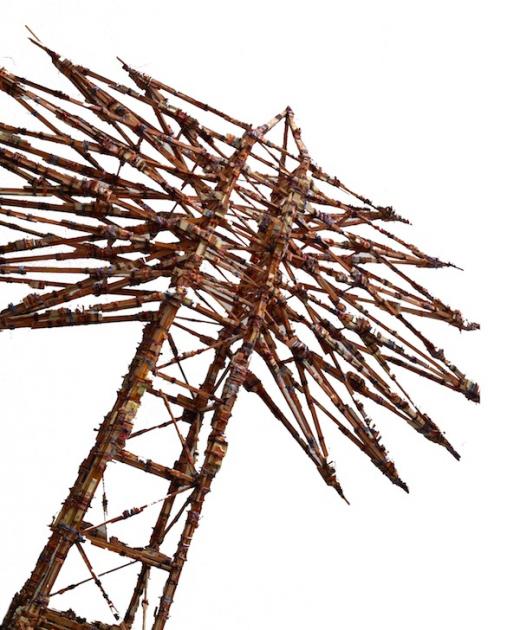An exhibition exploring the effects of global climate change is to open at Wolverhampton Art Gallery on Saturday 11 May. Featuring artistic responses to this environmental issue, Tipping Point will include work by highly acclaimed international artists such as Turner Prize-winner Simon Starling and former Prize nominees Darren Almond and Anya Gallaccio, along with an exciting new commission by sculptor Gerry Judah in association with Christian Aid.
Tipping Point will focus on the ways that artists have chosen to highlight key issues surrounding climate change, and its repercussions for both the environment and humanity. The exhibition continues Wolverhampton Art Gallery’s commitment to presenting art which is socially relevant, and to use contemporary art as a vehicle for exploring challenging issues.
Simon Starling reflects on energy efficiency and sustainability through Heinzmann Uni-solar Trek, a series of photographs which illustrate a cycling trip across France using an adapted solar-powered pushbike; while Merel Karhof’s functional Wind Knitting Machine uses wind-power as a route to sustainable living and creates a bridge between the past and the future.
Sculptor Gerry Judah’s new work, which has been created specifically for Tipping Point, was inspired by a research trip to India in association with international development agency Christian Aid. The series of work, entitled Bengal, consists of five sculptures which were developed after seeing how poor communities in West Bengal and Jharkhand are adapting to unpredictable weather patterns and rising sea levels caused by changes in the climate.
The exhibition will feature works created through collaboration with scientists in extreme locations. Katie Paterson’s audio and film work Langjökull, Snæfellsjökull, Solheimajökull signifies the vulnerability of the world in its current state, having extracted ice from three Icelandic glaciers and pressed this into records which then melt as they are played. John Kelly, who describes his practice as ‘forensic’, made his Deepfield Drawings during trips with scientists and these record his observations of the changing polar landscapes.
A number of works will contemplate a potential man-made apocalypse, including Heather and Ivan Morison’s installation The Opposite of All of those Things, which continues to address the artists’ interests in self-sufficiency and shelter, and The City series by Kansas-born Lori Nix. These photographs of post-apocalyptic disaster sites depict hazily familiar municipal areas which have been painstakingly constructed, photographed, and subsequently destroyed. Impending disaster is also conveyed through HeHe’s Castastrophes Domestiques No. 2: Prise en Charge which examines individuals’ responsibility for climate change and transforms an everyday electrical plug it into a conduit through which emissions spew every 60 seconds.
Man’s inferiority to nature and the Sublime is also explored within the exhibition. Darren Almond’s Bearing silently observes Indonesian miners extracting sulphur from the earth in the most inhuman of environments and reflects on the detrimental effects of industry to both man and the environment. Virginia Colwell’s response to counting the human cost of climate change extends to those willing to capitalise on victims of man-made disaster. The artist has created an installation depicting a fictitious insurance company who operate under the auspices of providing education to those most vulnerable. A fishing net woven from gold lamé thread, You got the best of my love by Anya Gallaccio, speaks of common things transformed beyond recognition and contemplates the price of progress and the value and function of the world around us.
Photo: Bengal by Gerry Judah © 2013

